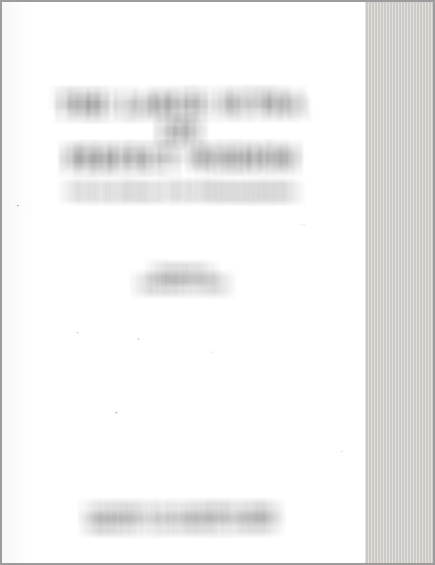Hanuman Nataka (critical study)
by Nurima Yeasmin | 2015 | 41,386 words
This page relates ‘Examination of the Language from Literary Perspective’ of the English study on the Hanuman-nataka written by Shri Damodara Mishra in the 11th century. The Hanumannataka is a Mahanataka—a fourteen-act Sanskrit drama dealing with the story of Rama and Hanumat (Hanuman) and presents the events in the lifes of Rama, Sita, Ravana and Hanuman (the son of Anjana and Vayu—the God of the Winds) based on the Ramayana story.
3. Examination of the Language from Literary Perspective
In respect of the language to be used in a literary composition, the Sanskrit rhetoricians provide distinct guidelines. It is an art of effective communication in language or art of using words particularly in speech and writing. Rhetoricians of Sanskrit have laid down distinct principles in the rhetorical use of the language in literary composition. The poetic merits (Guṇa)[1], which are no other than Rasadharmas, i.e. attributes of poetic sentiments, depend very much on such linguistic variations. The Guṇa is said to be mainly of three[2] types, namely Mādhurya, Ojas and Prasāda. A writer is expected to have command in employment of words suggestive of the Guṇa expressing the contextual sentiments.
Śrī Dāmodara Miśra shows his commendable control over the language and he maintains accuracy in the use of the language in respect of the contextual Rasa.
The delineation of various ‘Rasa’ like Pathetic (Karuṇa), Heroic (Vīra), Anger (Raudra), and Erotic (Śṛṅgāra) is commendable.
According to the Sanskrit rhetorician the Guṇa called Mādhurya exists in compositions where the sentiment are śṛṅgāra of both types, Karuṇa and Śānta.[3] The Mādhurya demands the use of softer sounds free from compounds or with lesser number of compounds if they exist at all.[4] This Mādhurya is found to be present the Hanumannāṭaka, on many contexts. There are so many verses which are composed having this Mādhurya. As for example in the verse aṅke kṛtvajanakatanayā[5] …jagāma there are fine employment of the sounds ‘ṅka’,’ta’,’ñca’ and ‘ma’, ‘pra’ which are found to be appropriate for effective suggestion of this Guṇa. Contextually, this is a description of śṛṅgāra of Rāma and Sītā. In verse ‘gāḍaṃgādaṃ kamalamukulaṃ … matvā’[6] there are found the employment of sounds ‘ka’, ‘ṅga’, ‘ṇḍa’ ‘ma’, ‘sa’which are appropriate for Mādhurya. Therein is found the description of Rāma and Sītā’s śṛṅgāra. Again, in the verse ‘śaṅke śasāṅke … priyāyāḥ[7] etc. wherein is described the pathetic condition of Rāma, there occur the soft sounds like ‘ṅka’, ‘ma’, ‘ta’, ‘pra’, ‘ṇḍa’, ‘ṅga’, which provide scope for suggesting Mādhurya.
Thus Śrī Dāmodara Miśra’s language is found to be soft and charming which suits the tender emotional outbursts like love, pathos etc.
On the other hand, in the use of Vīra and Raudra, the language becomes harsh and forceful.[8] Unusually lengthy compounded words mark such situations. Herein is found the use of the Guṇa called ‘Ojas’.[9] In the Hanumannāṭaka, the author also uses this ‘Ojas’ very befittingly. In the verse āścaryaṃ kārtavīryā …[10] there is found the presence of Vīra and the words employed therein are suggestive of the Guṇa called Ojas. In the verse yena svāṃ …uttered by Paraśurāma the existence of Raudra is noticed and needless to say, there is found the presence of Ojas Guṇa.[11]
According to Sāhityadarpaṇa and Dhvanyāloka, when the language is easily understandable, there is found the Guṇa called Prasāda.[12] This Guṇa is said to be existing in a work irrespective of the sentiment. In the Hanumannāṭaka, there are found the employment of Prasāda in various places. As for example astaṃ yāte mukula[13] …, mandaṃ mandaṃ janakatanayā[14] …, rāmādapi ca martavyaṃ[15] …etc. are found to be beautified with the Prasāda. As the meaning is easily understandable, so such a characteristic feature of the language undoubtedly speaks the literary ability of the poet.
Śrī Dāmodara Miśra uses both long and short compounds in his Hanumannāṭaka As an example of long compounded words, the verse cakrakrīḍā[16] … can be cited. On the other hand the verse gururgirā rājyamapāsya[17] … indicates at the ability of the writer in using words with short compounds. This style is appropriate in the case of an ideal drama wherein the effect of the lines or verses plays an important role in making the drama a successful one.
Footnotes and references:
[3]:
[4]:
[5]:
[6]:
[7]:
[8]:
vargasyākratṭṛtīyābhyāṃ yaktau varnau tadantimau
uparyadho dvayorvā sarefau ṭaṭhaḍaḍhaiḥ saha śakāraśca
śakāraśca tasya vyañjakatāṃ gatā
tathā samāso bahulo ghaṭanauddhatyaśālini Sāhityadarpaṇa, VIII. 5, 6
[9]:
ojaścittasya vistārarūpaṃ dīptatvamucyate vīrabībhatsaraudreṣu krameṇādhikyamasya tu ibid., VIII.4, 5
dīptyātmavistṛterheturojo vīrarasasthitiḥ Kāvya Prakāśa, VIII.69
[10]:
āścaryaṃ kartavīryārjunabhujavipinacchedalilāvidagdhaḥ
keyūragranthiratnotkarakaṣaṇaraṇatkāraghoraḥ kuthāraḥ
tejābhiḥ kṣatragotrapralayasamuditadvādaśārkānukāraḥ
kiṃ na prāptaḥ smṛtiṃ te smaradahandhanurbhaṅgaparyutsukasya// Hanumannāṭaka, I.37
[11]:
[12]:
[13]:
astaṃ yāte mukulanalinībāndhave sindhuputre prācībhāge pramadamudite pakvanāriṅgapiṅge
rāmaṃ kāmaṃ gurujanagirā mandhiraṃ sundaraṃ svaṃ rambhorūstam janakatanayā nandayantī jagāma// Hanumannāṭaka, II.2
[14]:
[15]:
